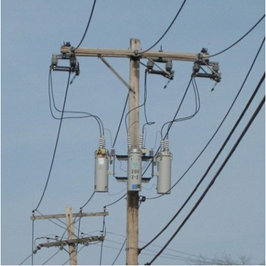Reclose Blocking - Manual
Risk Reduction Category
Technology Description
Reclosers are a mature technology and are ubiquitous because they are cost effective and beneficial to both utility and customer. Utilities avoid truck rolls for temporary faults, while customers benefit from increased uptime.
A distribution circuit recloser operating in its normal capacity restores power automatically after a temporary fault. However, it can also reclose into a condition that is not self-clearing, such as a fallen tree that has come to rest on the phase conductors. Despite the benefits of automatic reclosing, there exists a possibility of spark or flame at the location of the fault, and therefore a risk of wildfire each time a recloser energizes the circuit into a fault. While the risk of fire in this scenario is not a common threat in most regions of the country, utilities serving fire-prone areas would rather not take that risk especially during the dry season. These utilities may opt to temporarily disable reclosing. In this scenario, a fault would cause the circuit to open and remain open until crews arrive to assess the situation, check for fire ignition, and restore power manually when safe to do so.
Thus, the term reclose blocking refers to the prevention of automatic reclosing. This can be done remotely via communications (wired, wireless) or through sending a troubleshooter (or crew) to change the configuration of the recloser controls. This type of adjustment is termed manual reclose blocking in that it is either an ON (block reclosing) or OFF (allow reclosing) via a ‘command’ to the recloser and the setting will persist until changed. The decision to enter a priod of blocked reclosing is one that prioritizes public safety over convenience, cost, and reliability of service. Further, the decisions on where and when to make these adjustments are based on utility policy and/or operators’ assessment of risk. In the most “manual” of scenarios, the recloser settings are adjusted only seasonally, at the beginning and end of the season of high fire risk. For dynamically determined recloser settings, see also Reclose Blocking - Automated.”

Single-phase reclosers. Photo credit [1].
Technical Readiness (Commercial Availability)
Reclosers are available from a large number of vendors. Some of the more well-known suppliers of distribution gear are represented here. These will be widely deployed and integrated into utility systems.
Eaton
https://www.eaton.com/us/en-us/products/medium-voltage-power-distribution-control- systems/reclosers.html
G&W Electric
https://www.gwelectric.com/products/distribution-reclosers-and-overhead-switches
S&C Electric
https://www.sandc.com/en/products--services/products/?c=326
Implementations / Deployments
California utilities in fire-risk areas are operationally blocking reclosing seasonally and within specific rural areas of their service territory. When intelligent and communicating reclosers are installed, manual reclose blocking is fairly straightforward. However, some rural circuits may have non-communicating reclosers, requiring truck rolls.
Innovations as of Mid 2023
Potential Enrichment Work Opportunity
References
[1] https://www.eaton.com/us/en-us/products/medium-voltage-power-distribution-control-systems/reclosers/reclosers--fundamentals-of-reclosers.html - Retrieved 01/17/2024.